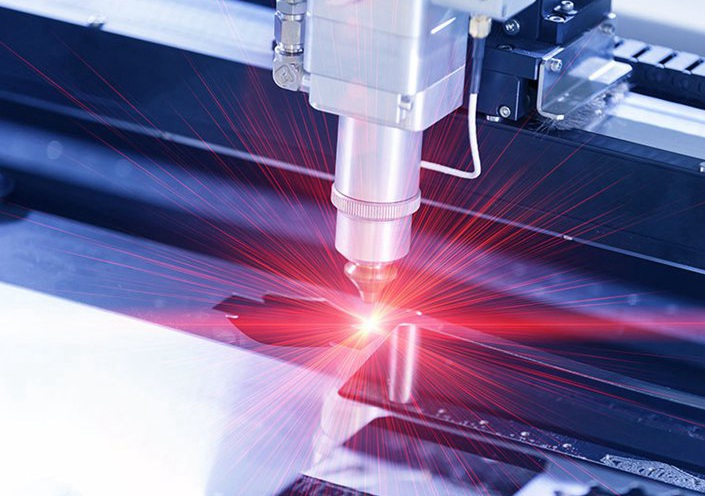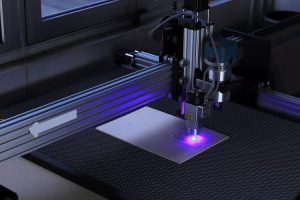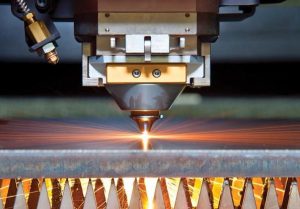Laser Knowledge
What Is Laser Wavelength?
The choice of laser wavelength is critical as it determines the laser’s interactions with materials, penetration depth, absorption characteristics, and suitability for different applications.

Laser Wavelength
Laser wavelengths refer to the distance between two successive peaks of a light wave emitted by the laser, and this determines its color or position in the electromagnetic spectrum.
Laser wavelength refers to the specific electromagnetic wavelength emitted by a laser source. In laser technology, different types of lasers emit light at various wavelengths, each with its unique properties and applications. The wavelength of a laser is determined by the energy levels of the atoms or molecules within the laser medium and is typically measured in nanometers (nm).
The human eye can perceive wavelengths from about 400 nm (violet) to 700 nm (red), which is the visible spectrum. However, lasers can operate outside this range, in the ultraviolet or infrared regions, for example.
The specific wavelength a laser emits depends on its medium (gas, crystal, or semiconductor), and different wavelengths have various applications, from medical procedures to communication, and interact differently with materials. Safety considerations also vary based on wavelength, especially concerning potential harm to eyes and skin.
Common Laser Types and Their Wavelengths for Different Materials
The suitable wavelength needed for laser engraving and cutting materials mainly depends on the type of materials. The nature of workpiece materials will respond differently while interacting with these wavelengths. Here are some common laser types and their wavelengths.
1. CO2 Lasers (10.6 µm wavelength): CO2 lasers are one of the most prevalent types in the industry. Ideal for cutting materials like rubber, plastics, paper, and wood, CO2 lasers excel in both cutting and engraving these materials with precision. CO2 laser cutters offer high power output, ensuring localized heating, which means the structure and texture of the materials remain uncompromised.

A significant portion of this wavelength penetrates the materials, enhancing absorption. As a result, the material surface heats up, leading to vaporization, making CO2 lasers a popular choice for delivering precise engraving solutions. From intricate details to full cuts, their versatility is unmatched. However, their higher reflectivity can pose challenges in specific applications, necessitating careful attention for optimal results.
2. Fiber Lasers (1.06 µm wavelength): Fiber lasers are also common for engraving and cutting. These work best on metals like copper, brass, aluminum, and steel. The effectiveness of fiber lasers in cutting materials is due to their strong absorption and deep penetration into these metals.

Due to this, fast melting takes place, and the users can cut and shape these materials as they want. Besides, precise engraving takes place as a result of laser cutting machines. Other than this, there is no harm in using these lasers for cutting and engraving even non-metals with the same precision.
3. Nd: YAG Lasers (1.064 µm wavelength): Nd: YAG lasers are one of the pulsed lasers. These are good for ceramics and metals. They create a similar influence to fiber lasers on the materials and can be a great alternative for CO2 lasers as well. Their wavelength is different from the other common types of lasers available for usage. These are crucial for precise metalworking when needed.
4. UV Lasers (355 nm wavelength): UV lasers work on different wavelengths, and these are common for engraving. Glass, ceramics, and some special forms of plastic are easier to engrave with UV lasers. But for cutting, these are not recommendable at all. Their wavelength is short, and therefore, professionals can achieve better precision and accuracy from them.
5. Green Laser (532 nm wavelength): Green lasers are good for ceramics and plastics. They have a higher wavelength than UV lasers, which makes them highly specific in their functions. These are not useful for cutting, but for engraving, they can promise great results. For visible and precise details and engraved impressions, green lasers are totally unmatchable in their performance.
6. Diode Lasers (various wavelengths): Diode lasers are adaptable and versatile because they contain different types of diodes. The type of diode laser determines the performance of these lasers. Therefore, while using diode lasers, we need to be highly clear and specific.
Because different diodes respond differently to specific materials, one mistake can ruin the entire workpiece in seconds; these are useful for engraving metals and ceramics. It is important to adjust them as per the nature of the material to derive desired results from them.
The choice of laser wavelength depends on the specific requirements of the application, including material properties, desired precision, and interaction with the target substance. For example, materials may absorb or transmit light differently depending on the wavelength, making certain wavelengths more suitable for cutting, welding, or engraving particular materials.
In addition to wavelength, other factors such as laser power, beam quality, and pulse duration also play crucial roles in determining the performance and capabilities of a laser system. Therefore, selecting the appropriate combination of laser parameters is essential to achieving optimal results in laser-based processes and applications.

IGOLDEN BLOG
Thank you for visiting the iGOLDENCNC website. iGOLDENCNC is the professional supplier of CNC machinery application solution, within the business of producing and selling CNC machinery and accessories.